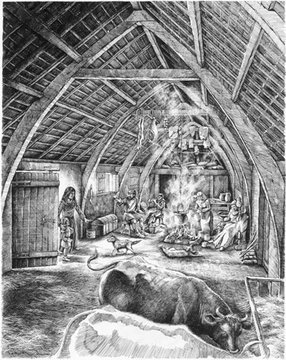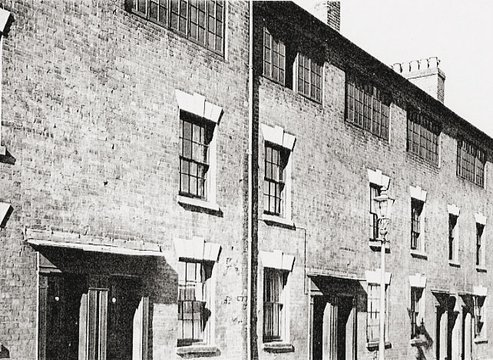Underlying research
The basic thesis of Frances Holliss's 2007 PhD ['The workhome... a new building type?' London Metropolitan University], is that there is an old but neglected building type, combining dwelling and workplace, that has not been systematically analysed before. It has been in continuous use for hundreds, if not thousands, of years in all cultures in all geographical locations across the globe. But as we are so used to it, we no longer see it, and therefore actually know very little about it. It is, as it were, an architectural continent that has not previously been mapped.
And as Carl Linnaeus said in 1751, “...without a name, the knowledge of an object is lost”. This dual-use building type used to be called ʻhouseʼ, with sub-sets ʻbake-houseʼ, bath-houseʼ ʻpublic-houseʼ etc. But through the C20, the term ʻhouseʼ came to mean a building largely restricted to the functions of cooking, eating, bathing, sleeping and watching TV, and so the dual-use building type that combines dwelling and workplace became nameless. Until, that is, the term ʻlive/workʼ was coined as part of a marketing exercise for loft-style apartments in the SoHo area of New York in the 1970s. This term is now being used more generically to refer to buildings that combine dwelling and workplace, and has even entered the Planning Framework.
Holliss found the use of the term 'live/work' to be problematic. It continues to have a close association to loft-style apartments and this can lead to other common building types that combine dwelling and workplace [such as the pub, shop, workshop or restaurant with the proprietor living above or the office in the spare bedroom or in a shed at the bottom of the garden] being ignored. ʻLive/workʼ is also an adjective rather than a noun, and as such difficult to define or regulate. So she coined a new generic term: ʻworkhomeʼ, to refer to all buildings that combine dwelling and workplace. She conceptualises this field as ranging from the Prime Minister governing the country from No 10 Downing Street [or the Queen living and working in Buckingham Palace] supported by many employees, to the solitary social tenant making Christmas crackers on the kitchen table of their council flat. She defines the workhome as any building in which people either live at their workplace or work in their home for more than 8 hours a week, the point at which she considers the combination of functions becomes spatially significant.
PhD content
Holliss traced the history of this building type from medieval times to the present day in England. She also investigated its contemporary manifestation through an analysis of the lives and premises of 76 contemporary home-based workers in urban, suburban and rural contexts in England, from across the social spectrum and working in a wide range of different occupations in diverse buildings. This resulted in the development of a series of typologies for, and design considerations about, the workhome. These are embedded in this Design Guide and Pattern Book.








